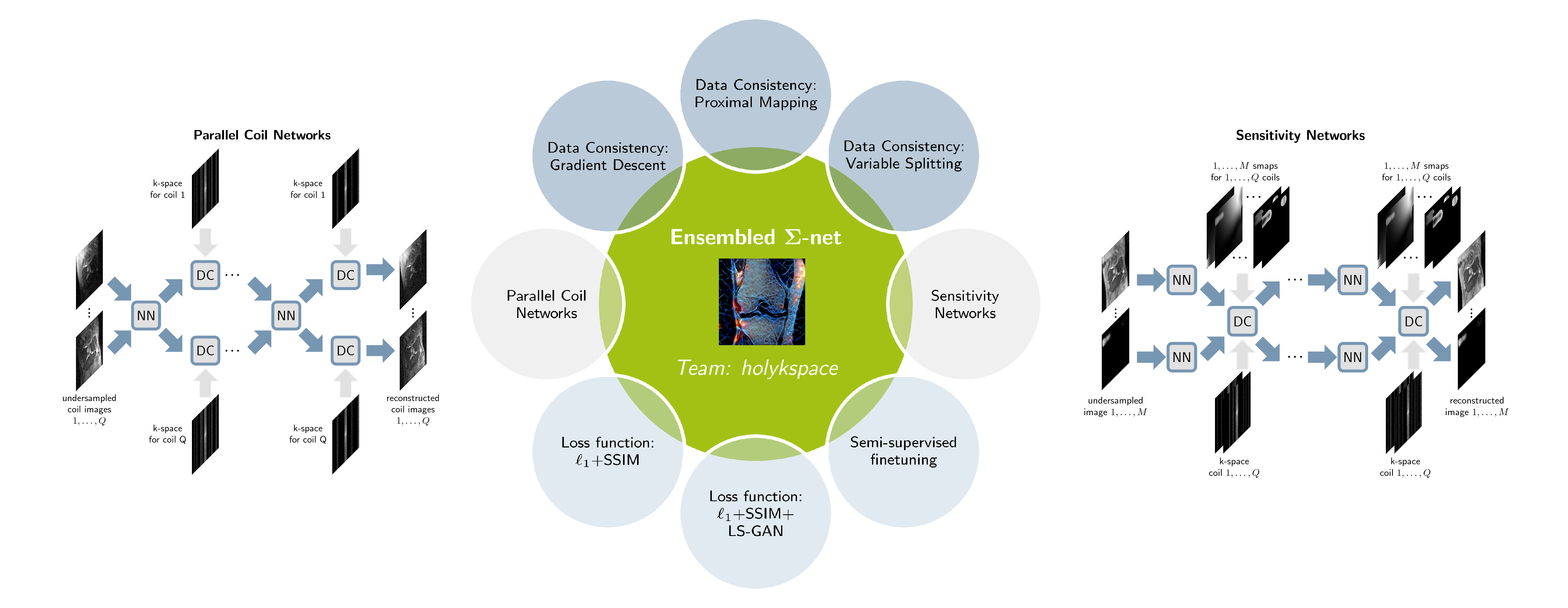$Σ$-net: Systematic Evaluation of Iterative Deep Neural Networks for Fast Parallel MR Image Reconstruction
Purpose: To systematically investigate the influence of various data consistency layers, (semi-)supervised learning and ensembling strategies, defined in a $\Sigma$-net, for accelerated parallel MR image reconstruction using deep learning. Theory and Methods: MR image reconstruction is formulated as learned unrolled optimization scheme with a Down-Up network as regularization and varying data consistency layers. The different architectures are split into sensitivity networks, which rely on explicit coil sensitivity maps, and parallel coil networks, which learn the combination of coils implicitly. Different content and adversarial losses, a semi-supervised fine-tuning scheme and model ensembling are investigated. Results: Evaluated on the fastMRI multicoil validation set, architectures involving raw k-space data outperform image enhancement methods significantly. Semi-supervised fine-tuning adapts to new k-space data and provides, together with reconstructions based on adversarial training, the visually most appealing results although quantitative quality metrics are reduced. The $\Sigma$-net ensembles the benefits from different models and achieves similar scores compared to the single state-of-the-art approaches. Conclusion: This work provides an open-source framework to perform a systematic wide-range comparison of state-of-the-art reconstruction approaches for parallel MR image reconstruction on the fastMRI knee dataset and explores the importance of data consistency. A suitable trade-off between perceptual image quality and quantitative scores are achieved with the ensembled $\Sigma$-net.
PDF Abstract


 fastMRI
fastMRI